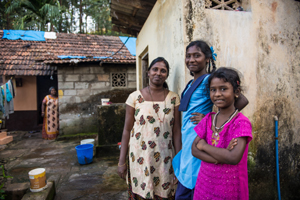
The cliché “Abandon all hope, ye who enter here” from Dante’s Inferno appears more appropriate to the current housing situation in India than anywhere else. India is facing a daunting housing shortage of 49 million units (Tiwari and Parikh 2012) Going forward, with urbanization and growing economic disparity, the challenges associated with housing availability, provisioning, and use will be further extenuated if appropriate remedial measures through policies and programs are not undertaken. India has a long history of instituting policies and programs for housing but without much success in terms of their impact in ameliorating the shortage. In our forthcoming ADBI working paper, we analyzed six decades of housing policies and programs in India to understand their key successes and failures in meeting the country’s housing needs. The prevailing economic and political environment provides the context in which concerns about affordable housing, homelessness, poor housing quality, and mismatches in demand and supply of housing could be understood.
The context for the housing shortage
After independence, the Indian economy grew annually at a modest rate of 4% for almost three decades. The focus of early architects of modern India was on capital goods, industrial development, import substitution, and self-reliance, funded by surplus generated in the rural economy. Within this context, little government funding remained for social sectors such as housing, which was left to the private sector. The government was able to shirk its financial responsibility as the Constitution of India did not mandate the right to housing, though a number of housing programs were instituted. Toward the mid-1960s, with democracy gaining ground, the rural masses, who comprised three-quarters of voters, realized that the economic policies were largely concentrated on cities, which led to the shift from a planned to a “demand” economy. The economic ideological mantra shifted from “industrial development” to “poverty eradication,” which led to a gravitational shift of policies from cities to rural areas. Huge subsidy and capital investment programs for the agriculture sector further left few resources for social sectors such as housing. By the 1980s, with the worsening fiscal position of the government and with the realization that the public sector alone would not be able to lead the country out of the stubbornly low annual rate of economic growth which had persisted for 30 years and would also be unable to take its people out of poverty, government policies embraced liberalization. Despite the fiscal impetus, agriculture continued to shrink while the industry and services sectors returned to growth.
The decline in the agricultural economy and subsequent growth of industries and the services sector has led to a continuous flow of the population in India from rural to urban areas. The axis of urbanization has largely been concentrated in Class I cities1 or megacities. This meant that the load (physical, social, and economic infrastructure) on big cities is much greater than their planned capacities, thus rendering them nonfunctional and chaotic. The uneven distribution of the urban population is an aftereffect of the inequitable distribution of resources, as discussed earlier. Although Class I cities in India have been receiving more support and attention from the central government and state governments to build up physical and economic infrastructure, the population increase has outpaced development, thereby widening the demand–supply gap, particularly in the case of the housing market.
Housing programs and evaluation
The theme of all housing programs and policies has centered on (i) providing public housing for lower-income groups and the economically weaker section of society, (ii) upgrading the existing informal housing stock in slums and squatter settlements, (iii) encouraging private developers to construct housing by providing serviced land, and (iv) providing housing to public sector employees. The two large programs with housing components were the Jawaharlal Nehru National Urban Renewal Mission (JNNURM) (2007–2012) and the Rajiv Awas Yojana (RAY), which was launched in 2013 and has since been replaced by a new “Affordable Housing for All” program. Housing programs have always been complemented by multiple institutions, for example, through the formation of housing boards at the state level, the establishment of “building centres” for technological innovation and development of low-cost building materials, and the establishment of housing finance institutions such as the Housing and Urban Development Corporation (HUDCO) and the National Housing Bank (NHB).
While most of these programs were well intended in terms of their objectives, they could not deliver much due to the lack of financial resources. Dependency on the central government for funds encouraged a top–down approach with marginal inputs from the operational agencies and staff directly working at the grassroots level. Since the 74th Constitutional Amendment in 1992, attempts have been made to devolve the programs’ formulation and implementation role to urban local bodies.
Lessons learned
- Constitutional status for housing: Though a continuous discussion is happening in India on the issue, the interpretation of housing as an enforceable right is ambiguous. The unclear constitutional status of housing has led to the formulation of a “weak” housing policy, which did nothing to improve the status of housing in the country as there was no binding obligation for the government to deliver affordable housing.
- Land titles in India: India does not use the Torrens title system to record ownership and the present system is marred with opacity, rendering transactions challengeable in courts. Recent governments have tried to address the issue. One of the laws that have profound implications for the housing market and where most activity in recent years has happened is the Guaranteed Land Titling Bill that ensures the security of land titles in urban India. The execution is weakly pushed and only a few states have enacted the bill so far. The incorporation of housing as a right will oblige the appropriate level of government to deliver on that right for low-income households by making available adequate resources.
- Adequate financial resources for affordable housing programs: One of the major reasons for the poor performance of most programs aimed at slum upgradation and construction of affordable housing has been that these programs were underfunded. The devolution of responsibility for the provision of housing for economically weaker sections of society and low-income groups to municipalities and other urban local bodies without devolving financial resources further weakened the capacity of these programs to deliver. Approaches ranging from construction of public rental housing by the government on its own or through public–private partnerships to direct demand or supply subsidies to incentivize the construction of low-income housing are required. The municipalities and other urban local bodies need to be strengthened financially to enable them to deliver on the programs.
- Market segmentation: In the absence of financial instruments for housing for lower-income groups, the development sector in India has catered either to upper-middle or high-income households. The use of unaccounted money to buy real estate is also a prevalent practice in India. Recent government regulations to curb the use of black money in real estate will curtail investor-led demand for luxury housing.
India has an extensive architecture of agencies, policies, and market frameworks for housing which the country needs to leverage by equipping them with adequate resources so they can deliver housing for all.
_____
1 Cities with a population of more than 100,000 are classified as Class I cities.
Reference:
P. Tiwari and J. Parikh. 2012. Global Housing Challenge: A Case Study of CO2 Emissions in India. School of Planning and Architecture, Bhopal, Spandrel. pp. 96–104.





